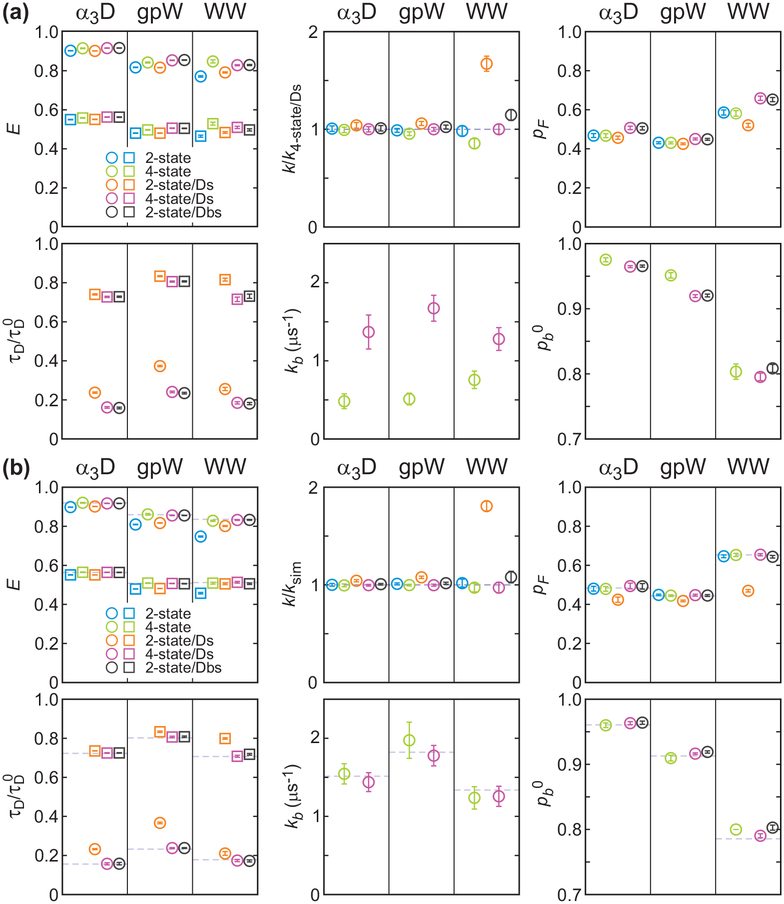Figure 6.
Simultaneously determined parameters using the maximum likelihood method with the two-state model (2-state, blue), four-state model that includes acceptor blinking (4-state, green), two-state model with donor delay time information (2-state/Ds, orange), four-state model with donor delay time information (4-state/Ds, purple), and modified two-state model that includes acceptor blinking (2-state/Dbs, black). (a) Parameters from the analysis of experimental data. E is the FRET efficiency (folded: circle; unfolded: square), relaxation rate k is normalized to the experimental values obtained from the 4-state/Ds analysis (dashed line), pF is the fraction of the folded state, donor lifetime τD (folded: circle; unfolded: square) is normalized to the donor lifetime without the acceptor (τD0), kb is the rate coefficient from the dark state to the bright state of the acceptor, pb0 (= kb/(kb + kd0)) is the fraction of the bright state population at the reference photon count rate n = 100 ms−1. The average photon count rates are 65.3, 72.6, and 54.4 ms−1, for α3D, gpW, and the WW domain, respectively. (b) Parameters obtained from the maximum likelihood analysis of recolored data using the experimental 4-state/Ds parameters (dashed lines). The color schemes and symbols are the same as those in (a).

